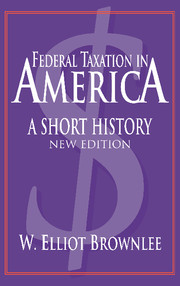Book contents
- Frontmatter
- Contents
- Acknowledgments
- Introduction: Taxation and national emergencies
- Part I The historic regimes
- Part II The conservative challenge
- 4 The “Reagan Revolution,” 1980–1986
- 5 Reviving the old regime, 1986–2000
- 6 Threatening the old regime, 2000–present
- Historiography and bibliography
- Index
- WOODROW WILSON CENTER SERIES
6 - Threatening the old regime, 2000–present
Published online by Cambridge University Press: 18 August 2009
- Frontmatter
- Contents
- Acknowledgments
- Introduction: Taxation and national emergencies
- Part I The historic regimes
- Part II The conservative challenge
- 4 The “Reagan Revolution,” 1980–1986
- 5 Reviving the old regime, 1986–2000
- 6 Threatening the old regime, 2000–present
- Historiography and bibliography
- Index
- WOODROW WILSON CENTER SERIES
Summary
On January 20, 2001, when George W. Bush took the oath of office as president, the period of divided government and indecisive Republican leadership came to an end. In the November 2000 elections, Republicans had maintained control of both houses of Congress, and the new Republican president, despite the irregularity of his own election, set out to establish control over the legislative agenda. As it turned out, President Bush had a definite top priority for his domestic program: using much of the budgetary surplus that had emerged from the 1990s to fund a large tax cut.
Supply-side economics and tax-cutting populism drove the tax cut that followed in 2001, as they had Ronald Reagan's cut twenty years earlier with the Economic Recovery Tax Act. But there were important differences. On the one hand, Bush's cut in 2001 was smaller than Reagan's in 1981. On the other hand, Bush had in mind a longer-run program of tax cuts. And as his program played out in 2002 and 2003, Bush appeared to have an agenda that was more radical than Reagan's. To be sure, both Reagan and Bush hoped their tax cuts would reduce discretionary spending. But Bush seemed prepared to go further and use tax cutting as a vehicle for containing or reducing the entitlement programs of Social Security and Medicare.
- Type
- Chapter
- Information
- Federal Taxation in AmericaA Short History, pp. 217 - 248Publisher: Cambridge University PressPrint publication year: 2004



